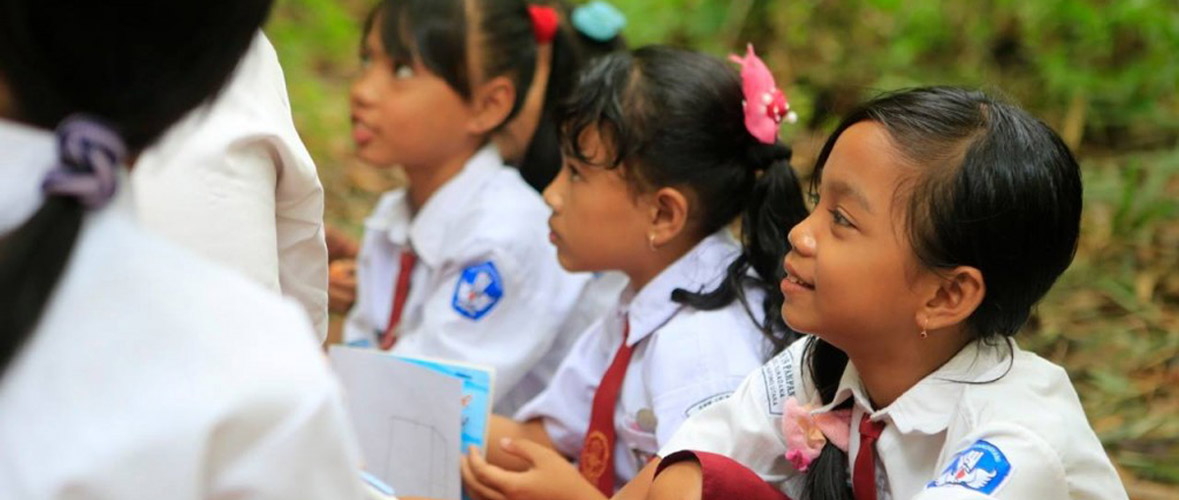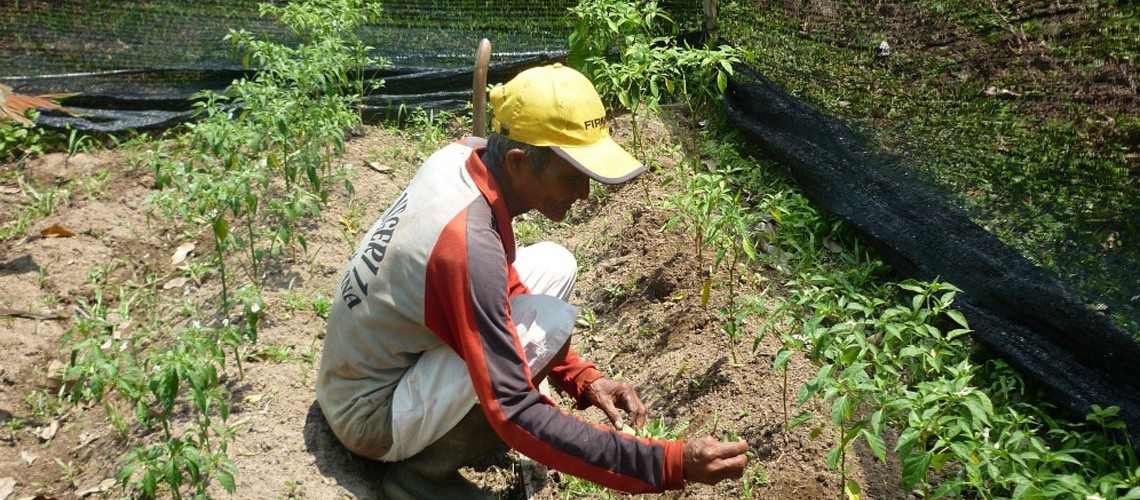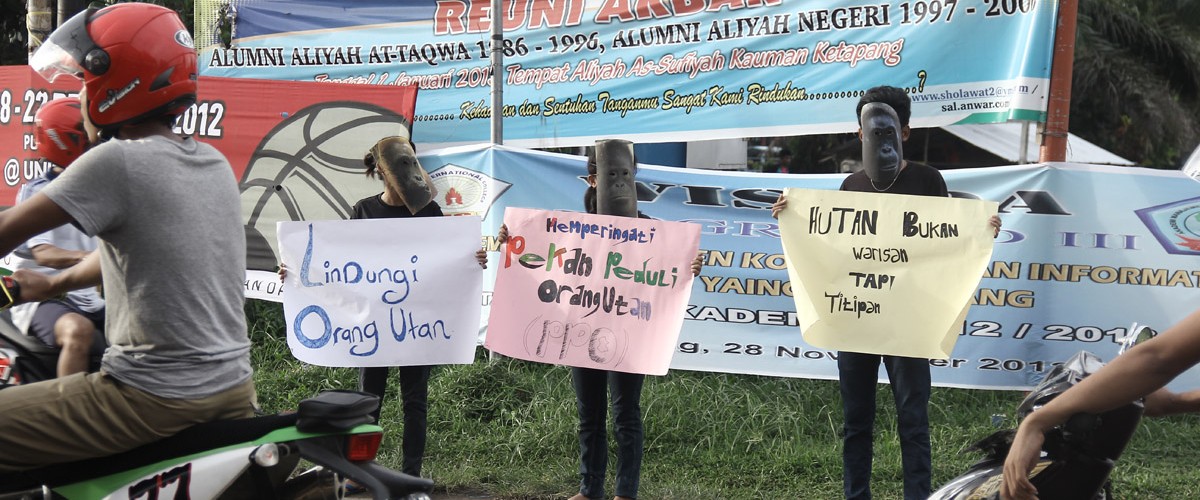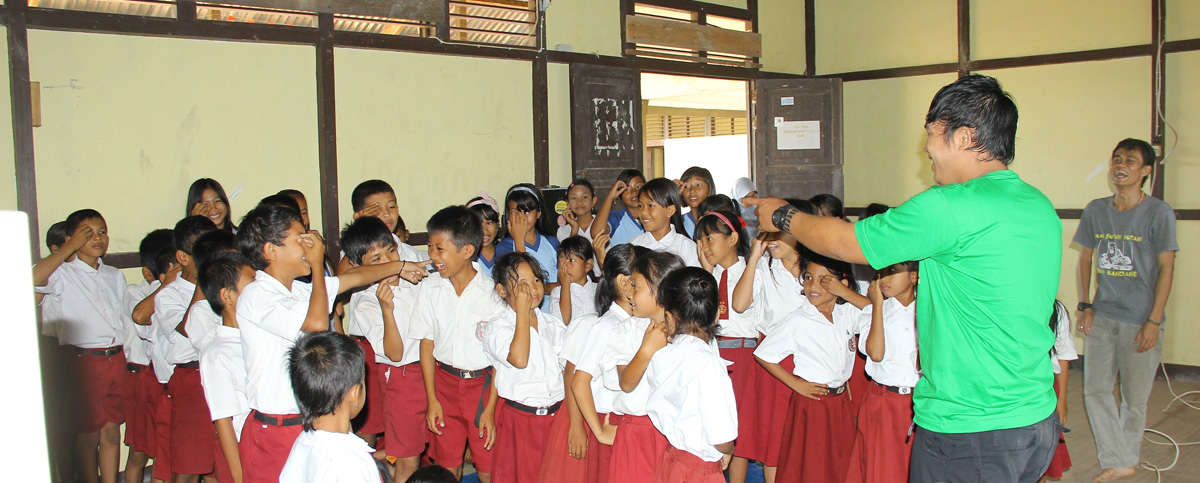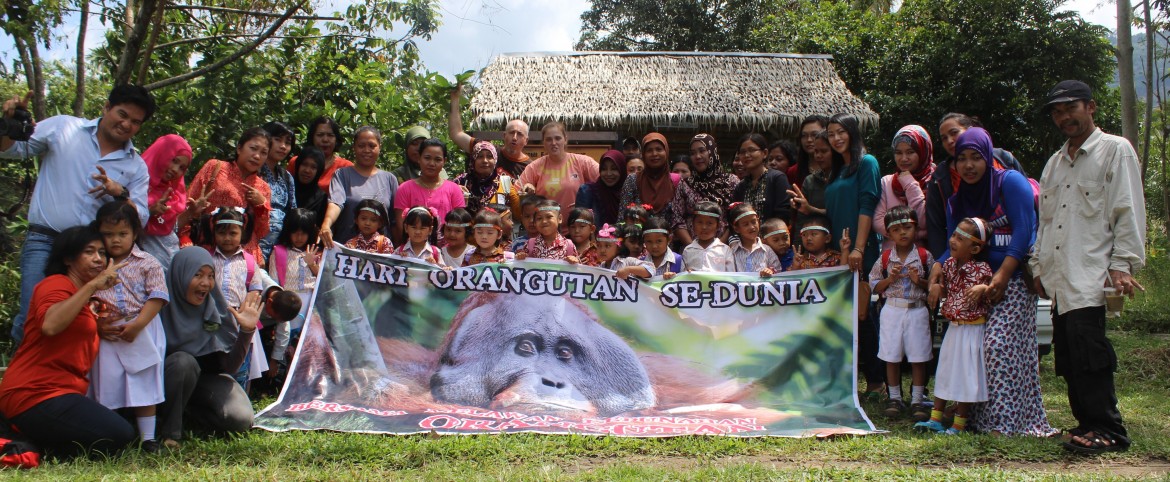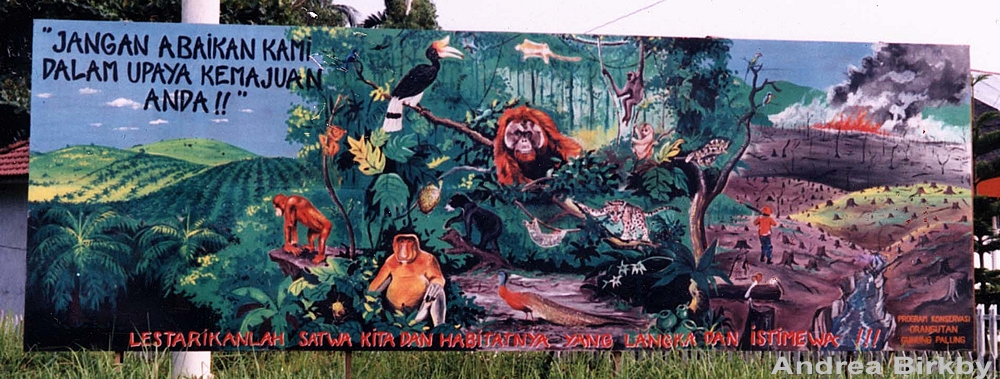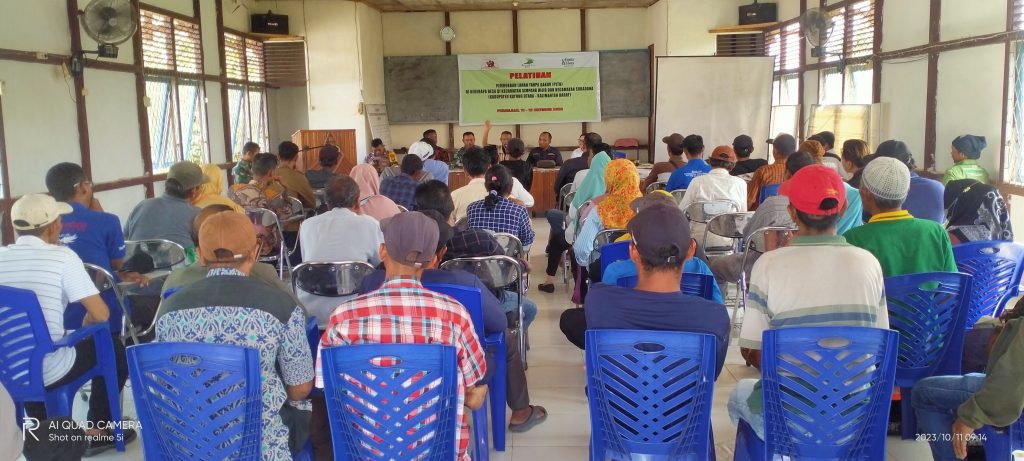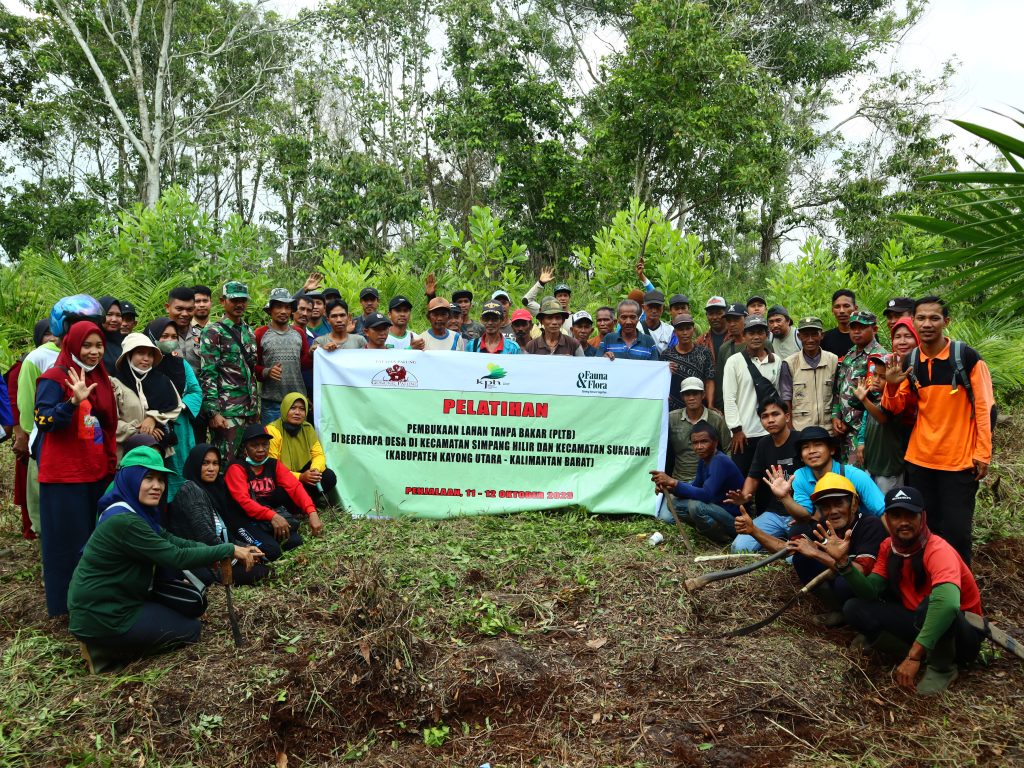By Hendri Gunawan, Hutan Desa Coordinator
Fires present an ongoing and serious threat to wild orangutans, and the forests that they inhabit, especially in areas outside the National Park that are close to human habitation. In Simpang Hilir District, North Kayong Regency, and particularly in the Village Forests (Hutan Desa) we work with, there are peat swamp forests which are at high risk of fires during the dry season. There are some who still clear land for agriculture by burning it because they view it as fast and cost effective. However, the negative impact of this practice, especially on peatlands, is quite significant. If peatland fires spread, they will have negative social, cultural and economic impacts such as the loss of livelihoods for communities around the forest. Humans can be disrupted by fires in other ways; new pests can emerge and respiratory tract infection increase. Forest fires can have substantial ecological and environmental impacts, including the loss of species, changes in land use and designation, and changes in water quality and quantity. These fires even have an adverse effect on international relations because of the widespread smoke emitted, which can cause protests from friendly countries.

From the end of August 2023 – September 2023 fires occurred in both Ketapang Regency and North Kayong Regency, including several areas around Village Forests in Simpang Hilir District (Padu Banjar Village, Pemangkat Village and Nipah Kuning Village). The fire started when several villagers set fires to clear agricultural land and plantations, which resulted in the fire spreading and becoming uncontrolled. The Village Forest Management Boards had to work hard together with partner institutions (KPH Kayong, Manggal Agni, Fire Care Community) to extinguish the fire so that it did not spread to the Village Forest area.
In response to this, Yayasan Palung, together with the Kayong Forest Management Unit (KPH) and Fauna and Flora International (FFI), held a training on Land Clearing without Burning (PLTB) in Penjalaan Village that included participants from several villages in Simpang Hilir District (Padu Banjar Village, Pulau Kumbang Village, Pemangkat Village, Nipah Kuning Village, Penjalaan Village, Rantau Panjang Village) and Sukadana District (Riam Berasap Jaya Village, Sejahtera Village and Pampang Harapan Village). The PLTB training was attended by 77 participants consisting of representatives from the Gunung Palung National Park Office, Kayong Forest Management Unit (KPH), and the Indonesian National Army, Police, Field Agricultural Extension (PPL), and the Agriculture and Food Service of North Kayong Regency, Village Forest Management Board members, and farmer groups assisted by Yayasan Palung and Tanjungpura University students.
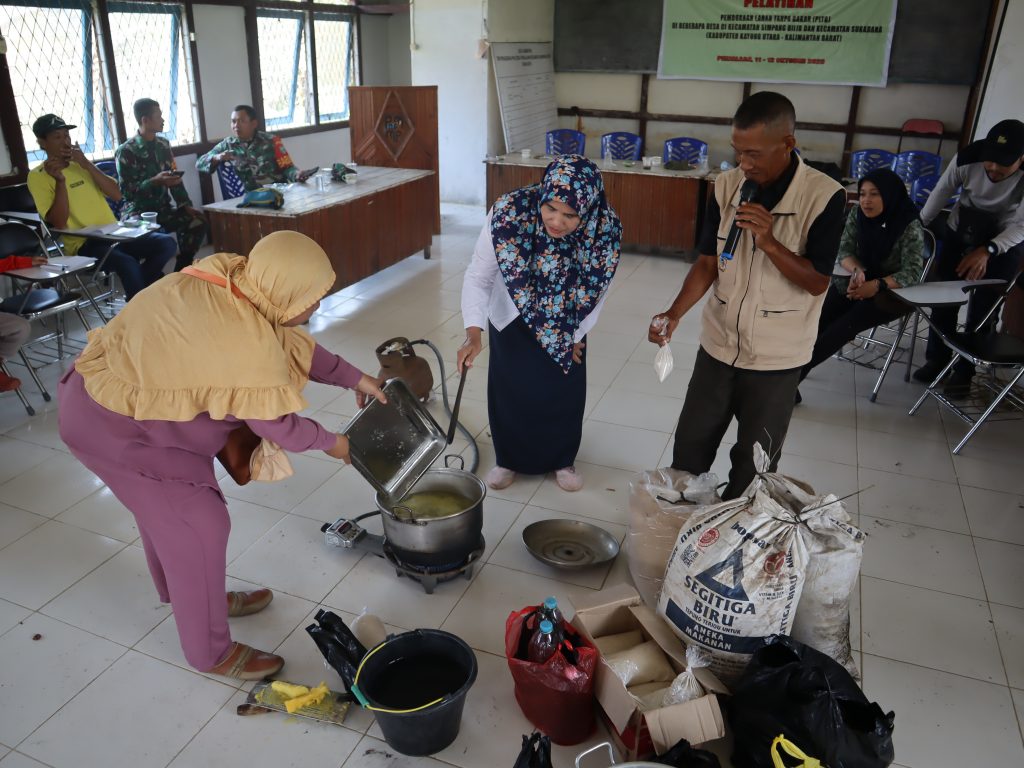
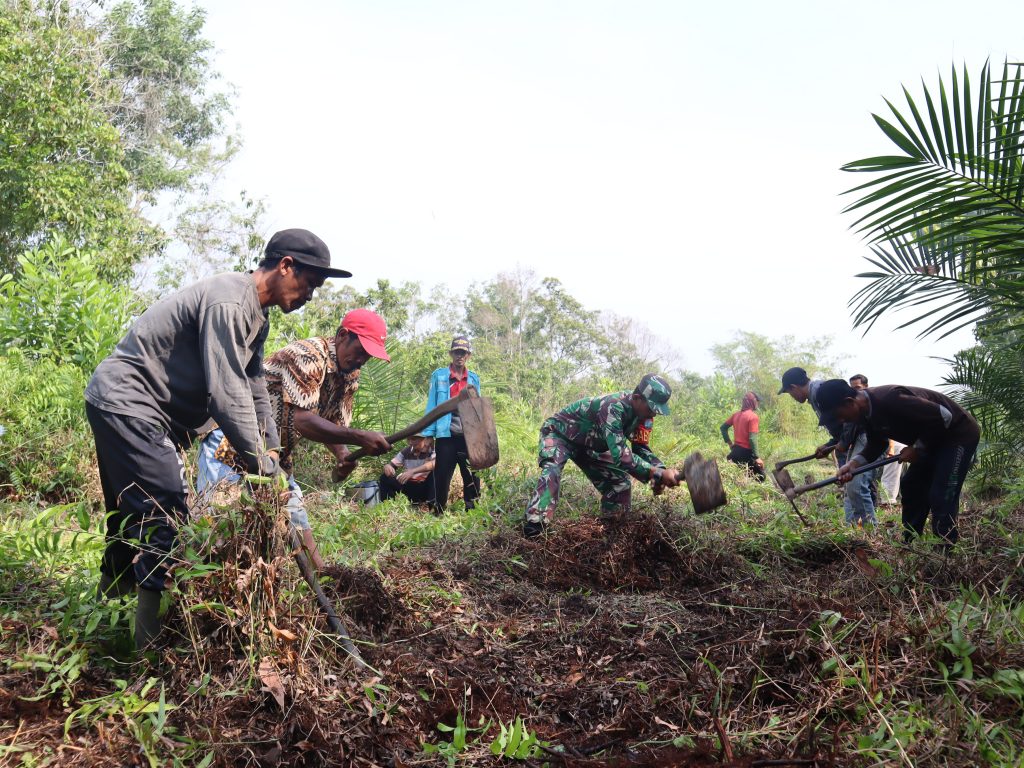
Bottom: Practicing manual land-clearing techniques that do not involve burning.
This training activity was carried out for 2 days (11-12 October 2023). The training facilitator was Professor Joko Wiryanto (Independent Agricultural Extension Officer). The material provided on the first day covered the negative impacts of land processing by burning, making F1 Embio (which functions to reduce acid levels and neutralize soil pH), and making environmentally friendly KCL (potassium chloride) fertilizer. On the second day, land clearing without burning was practiced on peatland belonging to one of the training participants.
Mrs. Euis Herawati, the Head of the Kayong Forest Management Unit (KPH), in her speech said that several months ago, the Kayong KPH had to work hard to deal with the fires that occurred in several sub-districts in North Kayong. The number of hotspots that appeared in the Sipongi application was 1,128 points. The fires in North Kayong Regency were dominated by peat and fern fields, which of course contain highly flammable materials under dry conditions. The Head of KPH Kayong hopes that the village management boards (LPHD) and KPH can continue to work together to monitor, prevent, and extinguish fires when they occur.
Mrs. Euis Herawati also expressed her gratitude to Yayasan Palung for providing fire extinguishing equipment to several LPHDs in Simpang Hilir District. The fire extinguishing equipment (water pump machine) that we secured for the LPHD is very light, so it is easy to carry during extinguishing activities and is very helpful in firefighting efforts. The President of the Republic of Indonesia has also conveyed directions “to find a permanent solution so that people do not clear land by burning it.” So, this PLTB training is one solution based on the needs that are clear in the communities we work with, and in alignment with the direction of the President of the Republic of Indonesia.
